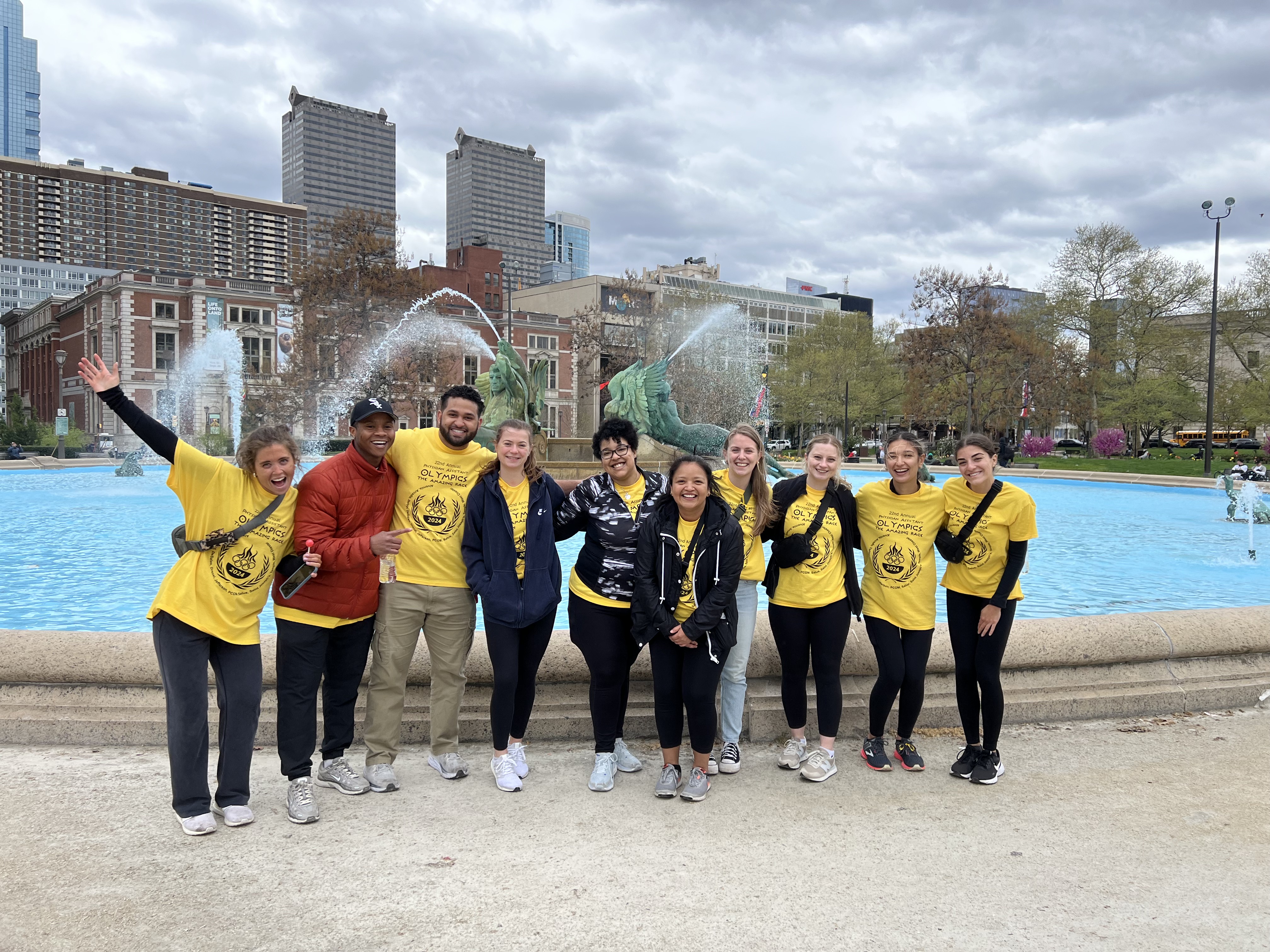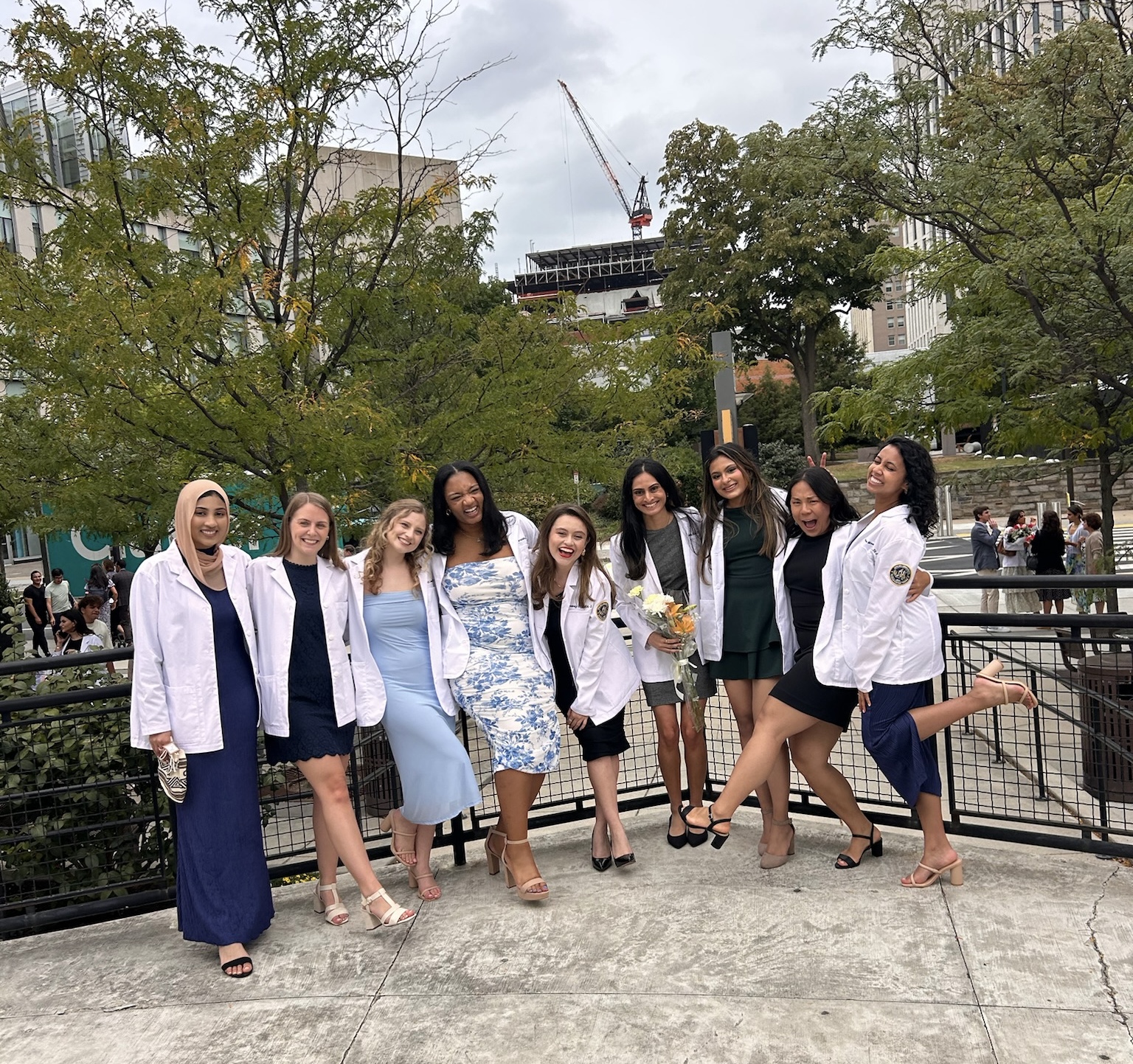Choose Your Own Adventure: Drexel’s Physician Assistant Program Opens Many Doors
October 8, 2025
Hannah Brown was an undergraduate student at Frostburg State University in her home state of Maryland, on track for a career in criminal justice and forensic psychology. Then, one day, she had an epiphany that would change the course of her life and open it to possibilities she’d never before imagined. Like being part of the emergency medicine clinical team on a Native American reservation.
While in a child development class for her minor in psychology, Brown watched a video of a pediatrician working with kids and thought, “Wow, this looks incredible!”
 It wasn’t a fleeting thought. Brown decided she wanted to work in medicine and began steering her path in that direction. She found a job as a medical scribe, where she got to know the physician assistant (PA). Brown had no prior knowledge about the role of a PA but now saw it as a viable career option for herself.
It wasn’t a fleeting thought. Brown decided she wanted to work in medicine and began steering her path in that direction. She found a job as a medical scribe, where she got to know the physician assistant (PA). Brown had no prior knowledge about the role of a PA but now saw it as a viable career option for herself.
“I realized how amazing her work-life balance was, how happy she was helping patients,” and how much of a difference she made Brown said.
She completed the coursework for her original major a semester early, then remained enrolled for additional semesters in order to fill the pre-med gaps in her education before applying to graduate school.
“Something really drew me to Philly, and Drexel checked a lot of my boxes,” Brown said. “It seemed like a great community and had a great reputation.” When she later visited the school in person, she said, “It just felt like I was in the right place.”

In September 2023, Brown entered the Drexel University College of Nursing and Health Professions’ Master of Health Science - Physician Assistant (PA) program. The curriculum starts with a year of didactic learning followed by 15 months of supervised clinical practice.
Every five weeks, students work in a new specialty—including family medicine, internal medicine, surgery, pediatrics, emergency medicine and more. At the end of each rotation, there’s an exam on that specialty and “certain specialties have an assignment or a presentation to do as well,” Brown said.
Most rotations are regional (Pennsylvania, New Jersey and Delaware, with a few in Maryland); however, a number are available throughout the country in places as far away as Alaska. Near or far, they cover an array of specialties and expose the students to a wide range of inpatient and outpatient working environments, from clinics in underserved communities to facilities with an abundance of resources.
Students rank their preferences from a master list of rotations by specialty and indicate whether they’re interested in traveling. Brown leaned on her assigned mentor (a student from the class above) for guidance when considering her options.

“I was texting and FaceTiming my mentor that entire week,” she said. “I felt very supported during the process.”
Brown’s clinical rotations have been the highlight of her time at Drexel. Recently, she traveled to Kayenta, Arizona, for an emergency medicine rotation. Kayenta is part of Navajo Nation, the largest Native American reservation in the United States.
“That was the opportunity of a lifetime,” she said.
Brown was provided with on-site housing a short walk from the hospital where she worked. Her responsibilities included evaluating the patient, presenting her findings to the preceptor, discussing treatment plans, writing up notes and recommending any tests or treatments the patient needed. Because the hospital lacked some resources, she learned how to care for patients using the supplies and technologies that were more readily available.
 “Everyone there was so eager to teach me,” she said. If Brown remarked that she’d never seen a certain procedure done before, the doctors, nurses and technicians—many of whom were Native American—would show her how to do it, then invite her to try it herself the next time.
“Everyone there was so eager to teach me,” she said. If Brown remarked that she’d never seen a certain procedure done before, the doctors, nurses and technicians—many of whom were Native American—would show her how to do it, then invite her to try it herself the next time.
“The thrill was knowing Drexel had prepared me well and that I could start to tap into everything that I’d learned,” Brown said.
Brown said one of the best parts of this particular rotation was “coming back so much more confident in my clinical skills.” “In addition to that confidence, my favorite takeaway from the Kayenta rotation was being exposed to Navajo culture/witnessing the beautiful lands and community of Navajo Nation,” she said.
Brown had positive things to say about each of her rotations; among them an inpatient psychiatric hospital in North Carolina—an experience she described as “incredibly eye-opening.”
“I still think about those patients to this day, because we were with them every day and they just made such an impact on me,” she said. “I was inspired by the patients' resilience and perseverance as well as by my preceptor's holistic approach to treatment,” she added.
Brown’s other rotations were in Philadelphia and Maryland. “I have loved those as well; I’ve learned so much and all of my preceptors have been awesome. The nurses and techs that I’ve worked with at every location have been so nice,” she said.
Students are allowed one “flex” rotation, where they can repeat a specialty they especially liked. Brown has chosen to return to women’s health and was excited to get placed at the office where she worked the first time around.
She’ll wrap up her program with a surgical rotation, a prep course for the upcoming PANCE (Physician Assistant National Certifying Examination) and a 10-week primary care practicum before graduating in December 2025.
Her advice to other students pursuing a career as a physician assistant: “Take advantage of all the opportunities that Drexel offers.”
Written by Abby Schwartz